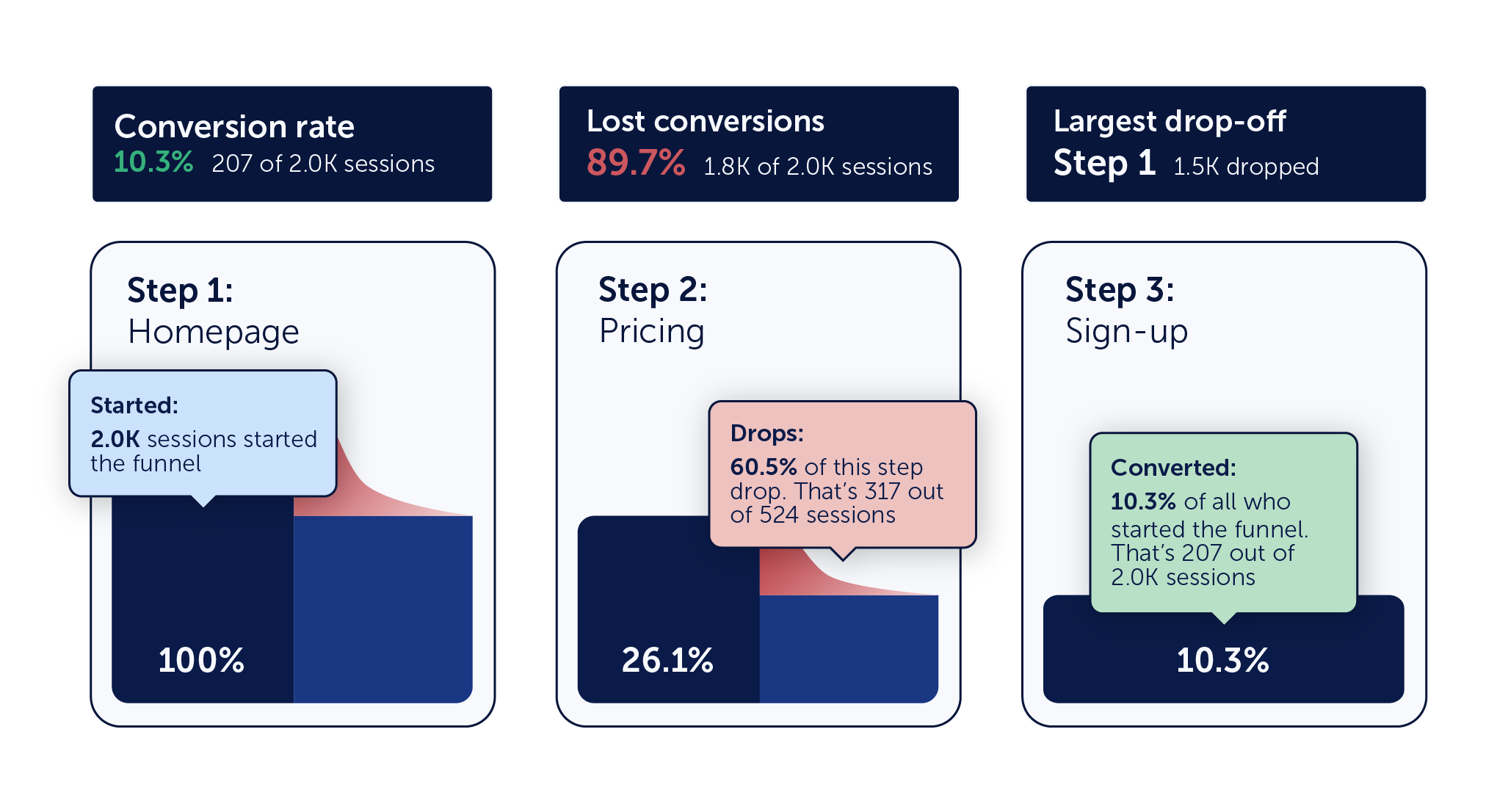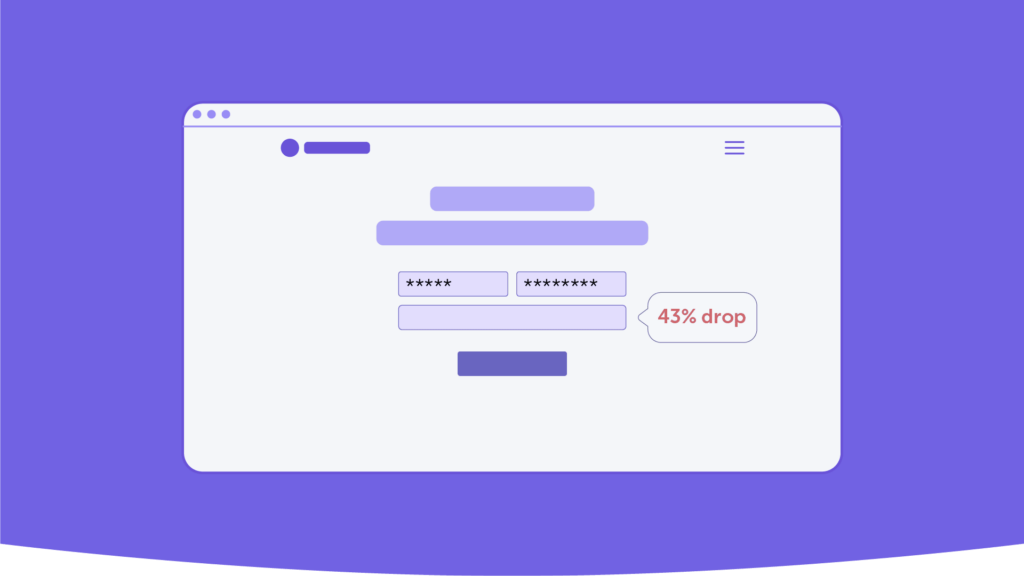Smarter Conversion Funnel Analytics

Crystal clear conversion funnel visualization
See user behavior in your funnel at a glance. Our intuitive charts help you spot drop-offs, leaks, and opportunities.
Fast funnel setup. Instant insights.
Create funnels in seconds – no dev work needed. Then filter by audience, device, or behavior for more targeted funnel tracking.
Perfect pairing: Funnels + Journey Analytics
Use our funnel analysis tools to analyse your desired funnel, and journey analytics to discover where they stray away.

Get better ROI from every user funnel
Whether you’re optimizing a checkout funnel or streamlining onboarding, Mouseflow’s funnel analysis tool gives you the power to act fast. Just select the pages users should visit (like homepage → product → checkout), and we’ll show how many people follow through – and where they bounce.

No-code funnel setup. Advanced funnel optimization.
Define steps in your user conversion funnel with just a few clicks. Add as many steps as you want and define the order of them based on your needs. Keep it simple or get advanced with regex rules – with our funnel analytics, you can do it all!

Combine Friction Detection, Funnels, and Journey Analytics like a pro
Conversion funnel tracking is great when you know your flow – like a sign-up, demo request, or e-commerce checkout. But what if people explore your site in unexpected ways?
That’s where Journey Analytics comes in. Journeys map every path users take, while Funnels help you focus on specific flows.
And what’s better – it’s all connected with our Friction Detection and Session replay. Don’t only identify the problem, fix it!

Find missed revenue in your funnels
With Revenue Insights, you can see how much potential revenue you’re losing when users drop off and how much more you could earn by fixing the friction. Just set what a conversion is worth and we’ll do the math. See missed revenue per step, simulate improvements, and prioritize the changes that drive the biggest business impact.

Conversion funnel optimization FAQ
Conversion funnel analytics refers to tracking and analyzing how users progress through a predefined set of steps on your website – like from a landing page to checkout. With a good funnel analysis tool, you can identify drop-offs and fix weak points to boost conversions.
Yes! You can create and compare multiple funnels – like onboarding, trial conversion, and purchase – in one dashboard. It’s an all-in-one funnel analytics software.
Absolutely. Define your steps, and our system will handle the funnel tracking. No tagging or coding needed. It’s a conversion funnel tool built for speed and clarity.
A user funnel follows a specific, goal-oriented path. A journey shows every path a user might take. For complete funnel analysis, use both – our platform is built to give you both perspectives.
Common tools like Google Analytics or Adobe Analytics provide you with a nearly never-ending store of data to mine. But where they fall short is in measuring, documenting, and visualizing on-page user behavior.
To obtain the best full-picture, enrich your current data with Mouseflow behavior analytics data. Check out all of our integrations.




